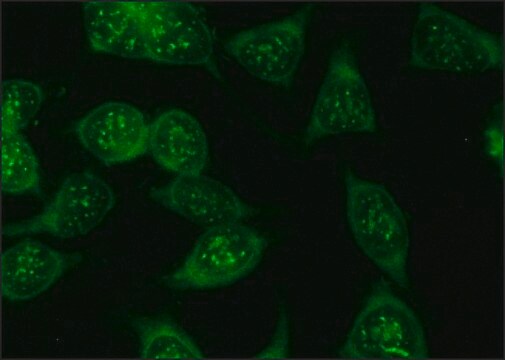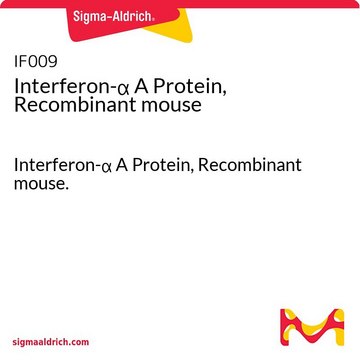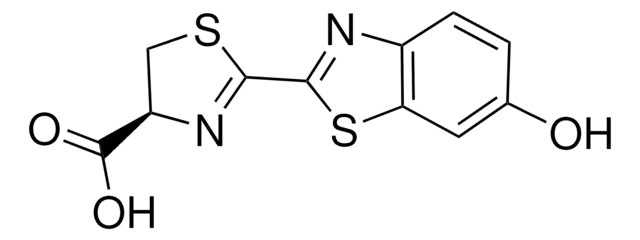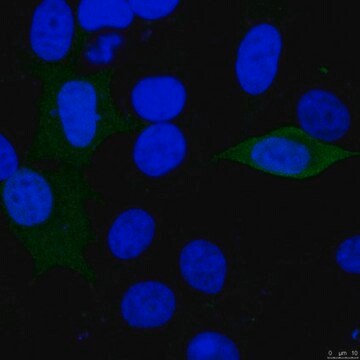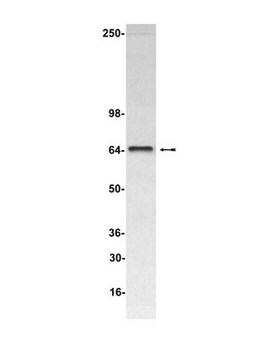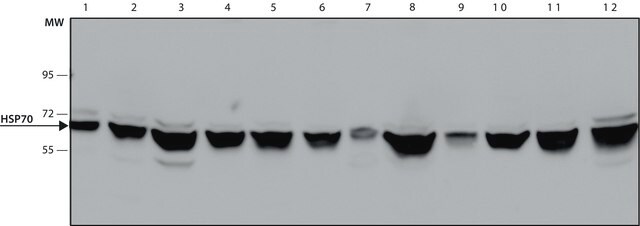L2164
Anti-Luciferase antibody, Mouse monoclonal

clone LUC-1, purified from hybridoma cell culture
Synonyme(s) :
Anti-Luciferase Antibody
About This Item
Produits recommandés
Source biologique
mouse
Conjugué
unconjugated
Forme d'anticorps
purified immunoglobulin
Type de produit anticorps
primary antibodies
Clone
LUC-1, monoclonal
Forme
buffered aqueous solution
Poids mol.
60 kDa
Validation améliorée
recombinant expression
Learn more about Antibody Enhanced Validation
Concentration
~2 mg/mL
Technique(s)
immunocytochemistry: 20-40 μg/mL using transfected 293Tcells expressing luciferase
immunocytochemistry: suitable
western blot: 2-4 μg/mL using whole extract of transfected 293T cells expressing luciferase
western blot: suitable
Conditions d'expédition
dry ice
Température de stockage
−20°C
Modification post-traductionnelle de la cible
unmodified
Description générale
Spécificité
Application
- immunoblotting
- immunocytochemistry
- immunohistochemistry
Actions biochimiques/physiologiques
Forme physique
Notes préparatoires
Stockage et stabilité
Clause de non-responsabilité
Vous ne trouvez pas le bon produit ?
Essayez notre Outil de sélection de produits.
Code de la classe de stockage
10 - Combustible liquids
Classe de danger pour l'eau (WGK)
WGK 1
Point d'éclair (°F)
Not applicable
Point d'éclair (°C)
Not applicable
Certificats d'analyse (COA)
Recherchez un Certificats d'analyse (COA) en saisissant le numéro de lot du produit. Les numéros de lot figurent sur l'étiquette du produit après les mots "Lot" ou "Batch".
Déjà en possession de ce produit ?
Retrouvez la documentation relative aux produits que vous avez récemment achetés dans la Bibliothèque de documents.
Notre équipe de scientifiques dispose d'une expérience dans tous les secteurs de la recherche, notamment en sciences de la vie, science des matériaux, synthèse chimique, chromatographie, analyse et dans de nombreux autres domaines..
Contacter notre Service technique